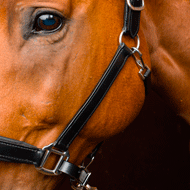Study reveals increasing drug resistance of parasitic nematodes

Cyathostomins can be life-threatening in horses when they are present in large numbers.
The study investigated the efficacy of antihelmintic drugs in treating cyathostomins, a group of parasitic nematodes (worms) that are highly prevalent in horses, and may be life threatening in large numbers.
Antihelmintic drugs have been used indiscriminately to control these worms in horses for the last 40 years, but the results show that the drugs are not controlling the parasite as effectively as they used to.
Published this week in the International Journal for Parasitology, the study analyses the efficacy of the four available broad spectrum antihelmintic drugs, on 16 thoroughbred stud farms in the UK. The percentage reduction of cyathostomin worm egg counts found in the faeces of the horses after treatment was calculated, as well as the time to egg re-appearance following treatment.
The results revealed that while Ivermectin and Moxidectin showed acceptable efficacy at two weeks post-treatment, the time period to the reappearance of worm eggs in the faeces of the horses was shorter than previously observed.
Worm resistance was measured at two weeks post treatment, and observed against the other two antihelmintic products examined, Fenbendazole and Pyrantel. Resistance to Ivermectin was also identified in the common roundworm of foals, Parascaris equorum.
Professor Jaqueline Matthews, deputy director at Moredun, said: “These results from a comprehensive study involving several thoroughbred stud farms suggest that the common antihelmintic products are working less effectively than measured previously, and indicate the presence of multi-drug resistance.
"It is therefore important that more sustainable strategies for worm control be deployed in practice. These involve evidence based protocols using worm egg count analysis to direct treatments at certain times of year (spring and summer) and should be designed with input from a veterinary surgeon or SQP.”



 BSAVA is to partner with BVA Live (11-12 June 2026) to champion clinical research.
BSAVA is to partner with BVA Live (11-12 June 2026) to champion clinical research.